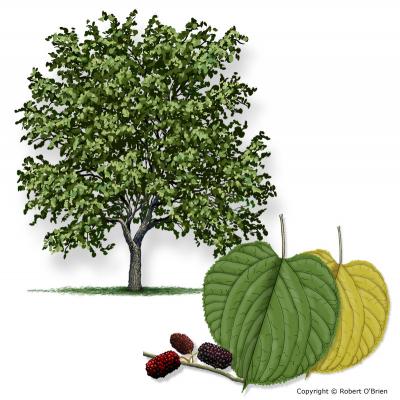Mulberry, Red
Description
Medium-sized tree 50 feet high with broad rounded crown. Scattered and widespread in hardwood forests. A shade tree and suitable for planting for wildlife. Though seldom abundant, mulberries are eaten by people and wildlife.
-
Price:
$1.00
- SKU: 5
- Type: Hardwood
- Hardiness Zones: 4, 5, 6, 7, 8, 9
- Moisture Zones: Central, Eastern
- Soil Type: Most
- Windbreak: Superior
- Erosion Control: Fair
- Wildlife: Superior
- Product Type: Bare-Root Seedlings
In stock
USDA Hardiness Zones
The primary guide to determine plant hardiness is the USDA Hardiness Zone Map, which divides the United States into ten zones based on average minimum temperatures. Each zone is then subdivided into A and B sections. A plant is said to be hardy if it can tolerate the lowest average winter temperature that occurs in a zone. Hardiness is affected by duration and intensity of sunlight; amount and timing of rainfall; length and severity of summer drought; soil characteristics; slope; frost occurrence; humidity; and cultural practices.
For more information or questions contact your nearest forester for advice.

